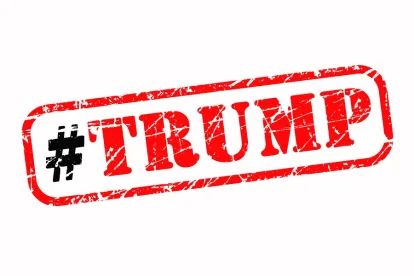As we’ve previously discussed, agencies within the Department of Health and Human Services (DHHS) pushed through several final rules towards the end of the Obama Administration. However, since taking office, President Trump has followed through on his campaign promise to significantly roll back Federal regulations and has taken several actions aimed at slowing and reversing agency regulatory processes, including processes at the DHHS sub-agencies CMS and FDA. These executive actions are creating a climate of uncertainty for regulated industries and their stakeholders.
What Actions Have Been Taken Pursuant to Trump’s “Regulatory Reform” Agenda?
-
On Inauguration Day, new Chief of Staff Reince Priebus issued a memorandum that announced a freeze on the issuance of any new or pending regulations or guidance documents by Federal departments and agencies. This order also required agencies to postpone the effective date of any final rules that were already published but not yet in effect, so that they could be reviewed by appointees of the Trump Administration.
-
Then on January 30th, the President signed his so-called “2-for-1” Executive Order (formally called the “Executive Order on Reducing Regulation and Controlling Regulatory Costs”), which requires Federal agencies to identify at least two existing regulations to be repealed when proposing or implementing a new one. It also requires agencies to have a zero incremental cost increase for regulations finalized in fiscal year 2017.
-
The White House Office for Management and Budget (OMB) issued interim guidance on February 2, 2017 that clarifies certain aspects of implementing the 2-for-1 Order. Most critically, OMB clarified that (i) the Order applies only to regulatory actions classified as “significant”; (ii) agency guidance documents may be impacted as well if they rise to the level of being “significant”; and (iii) any existing regulatory action that may produce “verifiable savings” upon its repeal may qualify as a deregulatory action for purposes of the 2-for-1 Order. In order to be deemed “significant,” a regulation must have an annual effect of $100 million or more on the U.S. economy or adversely affect the economy in some material way, among other possibilities.
-
On February 24, 2017, President Trump issued another Executive Order that requires each Federal agency to establish a task force headed by a Regulatory Reform Officer to review its existing regulations and work towards meeting the Administration’s various policy goals. These Regulatory Reform Task Forces are required to provide their first progress report to their respective agency heads within 90 days (so by May 25, 2017).
The 2-for-1 Order and OMB’s interim guidance were quickly challenged by public interest groups in a lawsuit that alleges the actions exceed the executive’s constitutional authority and violate the Take Care Clause. The lawsuit is pending in the D.C. District Court.
How Are DHHS Agencies Being Affected?
Highly regulated industries like those in the health care and drug development spaces are faced with significant uncertainty about how new rules may be implemented as well as which old rules may be repealed in order to meet President Trump’s cost-cutting mandates. Indeed, the OMB’s interim guidance on the 2-for-1 Order does not address all of the uncertainties, and we would expect some additional guidance from that office soon in light of the “interim” label on that February 2nd document (OMB accepted comments on it through February 10th).
But until such a time that agencies and the public have a better understanding of the intricacies of these inter-related executive orders and White House memoranda, affected stakeholders may have a difficult time predicting the fate of proposed or existing regulations. Several important questions remain:
-
The 2-for-1 Order applies by its terms even to regulations explicitly required by statute. However, per the OMB’s clarifications, the order does allow regulations issued under a statutory or judicial deadline to be enacted without the agency being required to identify the two corresponding regulations for repeal “by the time of issuance.” Some of the issues that continue to be unclear include (i) when the required “offsetting regulatory actions” would need to be identified or actually repealed; (ii) what the consequences are, if any, to an agency that does not complete the offsetting process; and (iii) what happens to the new regulation that was promulgated if the agency doesn’t follow through. The February 24, 2017 Executive Order on “Enforcing the Regulatory Reform Agenda” includes a provision on agency accountability, but OMB has not yet released any guidelines for such accountability metrics.
-
In interpreting the 2-for-1 Order’s requirement that every new and repealed regulation be scored for its economic impact/cost savings, the OMB interim guidance explains that all previous economic impact analyses are presumed to be inaccurate and must to be revised. Accordingly, the cost of current and future regulations may be more heavily scrutinized than before. This is expected to create a greater burden on agencies like CMS and FDA to perform economic analyses that they are not necessarily heavily staffed to do; and hiring additional economists may not be possible under the Administration’s civilian hiring freeze (there is no obvious exemption for economists under a DHHS implementation memo on the hiring freeze, dated February 6th).
-
The OMB interim guidance makes clear that formal notice-and-comment rulemaking is not the only regulatory activity affected by these executive orders – agency guidance documents may be impacted as well if they rise to the level of being “significant.” More specifically, OMB states that informal guidance documents “will be addressed on a case-by-case basis” and that “any cost savings claims for guidance or other documents must be specific and verifiable.” Agencies like FDA heavily rely on guidance documents as a way to elucidate the expectations for regulated industry, especially in technical areas, and industry stakeholders also appreciate the clarity that guidance documents can provide. So it remains an open question whether FDA, among other agencies, will have to withdraw two existing guidance documents before it can issue a new one.
For health care and related industries in which the regulatory scheme is very tightly knit and far-reaching in scope, agencies will have to take great care in determining which regulations should be on the chopping block to offset new ones. The interwoven nature of many regulations makes it very difficult to remove one piece without having a major impact on other areas. Such complex decision-making processes also could cause a slowdown in activity by agencies that some stakeholders feel already have very protracted rulemaking timelines and do not move quickly enough to respond to emerging issues.
We will continue to watch the effect of these important executive orders on the health care, pharmaceutical, and medical device industries. We also continue to monitor Congress for actions that may be taken under the Congressional Review Act to overturn final regulations implemented by the Obama Administration. Stay tuned for updates and specific reports on FDA, CMS, or other DHHS activities that might be curtailed or rolled back.





 />i
/>i
